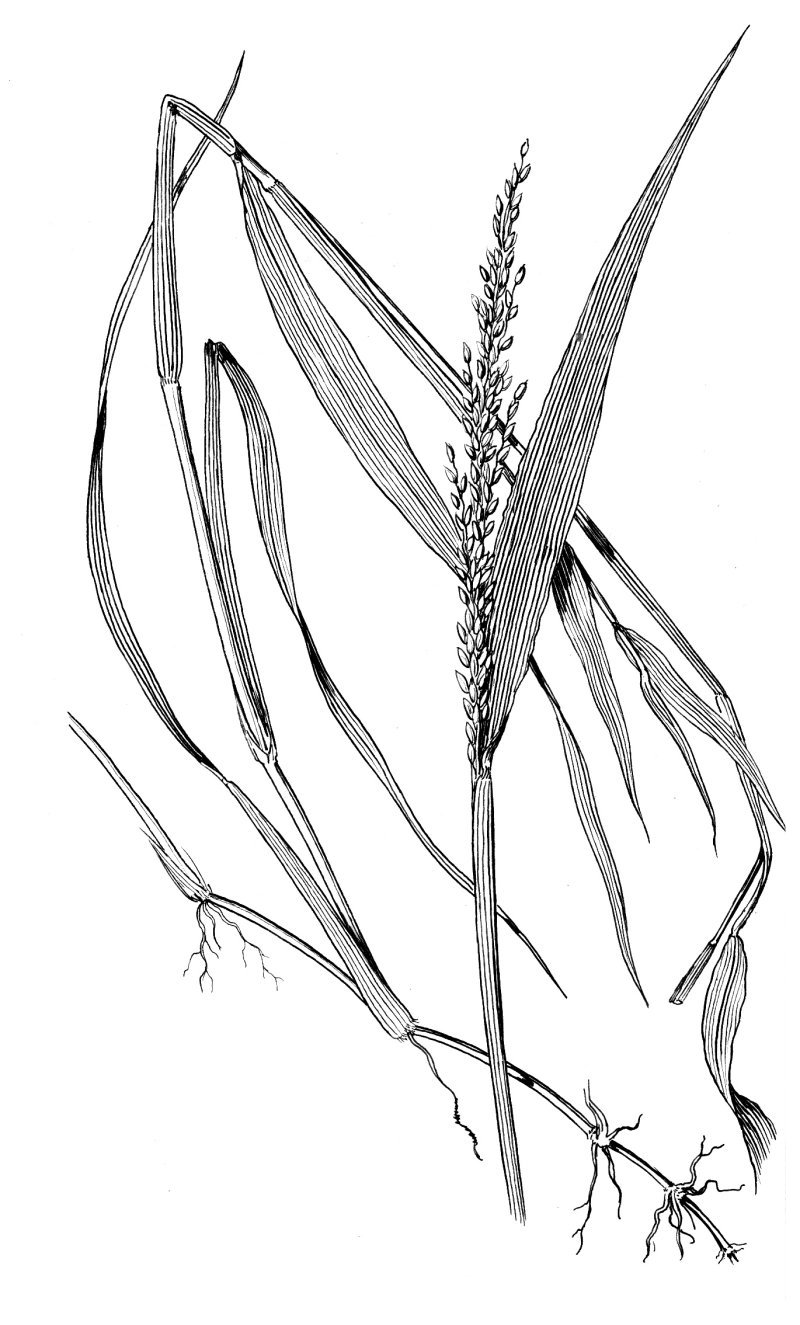
Panicum texanum Buckl. Texas Panicum Habit: Tufted, branching annual. Culms: Erect or ascending, often decumbent and rooting at the lower nodes, 50-150 cm. or more tall, branching from the middle and lower nodes, leafy, softly pubescent at least below the nodes and beneath the panicles. Blades: 8-20 cm. long, 7-15 mm. wide, ascending or spreading, flat, rounded at the base, softly pubescent on both surfaces, often finely papillose. Sheaths: The lower shorter than the internodes, the upper usually overlapping, densely ciliate, softly pubescent, often papillose. Ligule: About 1 mm. long, ciliate. Inflorescence: Panicles finally exserted, 8-20 cm. long, 10-30 mm. wide, the branches short, appressed, loosely flowered, the axis and rachis pubescent with long hairs intermixed, the short-pediceled spikelets somewhat crowded on several narrow spikelike racemes. Spikelets: 5-6 mm. long, about 2 mm. wide, fusiform, pointed, short-attenuate at the base, pilose, 5-7-nerved. Glumes: The first more than half the length of the spikelet, 3-5-nerved (3-7) acute, the second and sterile lemma exceeding the fruit, often obscurely reticulate, 5-7-nerved. Fertile lemmas: Shorter and more obtuse than the glumes, enclosing a palea. Fruit: 3.7-3.8 mm. long, about 2 mm. wide, elliptic, apiculate, transversely rugose. Habitat: Prairies and low open ground along streams and irrigation ditches. Kansas Range: Southwest Kansas (Hamilton county). Synonyms: Urochloa texana (Buckl.) R. Webster